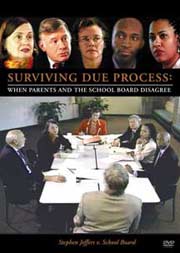In This Issue . . .
Circulation: 77,710
ISSN: 1538-320
March 9, 2010 |
In the second half of the school year, many parents hear the clock ticking louder and louder as graduation nears. This day comes before you know it.
Hopefully, you have been working closely with your child’s IEP team through high school to ensure that appropriate transition goals have been established and your child's progress toward these goals has been measured and documented.
In this issue of the Special Ed Advocate, we take a closer look at transition planning and transition services to ensure that our children are prepared for further education, employment and independent living. You'll find advice, transition checklists, and tips to help your child make a successful transition.
Please don't hesitate to forward this issue to other friends, families, or colleagues.
Not a subscriber? Sign up free today! l Read previous issues
New! Find Wrightslaw on Facebook |
|
Transition Planning Checklists
Your child's IEP transition plan should be based on his individual needs, interests, and choices - with goals that address what he is doing now and what he wants to do when high school is over.
Transition planning should be done with your child, not for your child. Transition should help your child understand his disability and what he needs to be successful. Transition can include decisions about where to live and what to do for fun.
For two checklists and some great advice to help your child make a successful transition from school read, Transition Planning: Setting Life Long Goals. |
|
Tansition from School to Work
"I want my son to be prepared to enter the workforce when he leaves school. How can we we combine No Child Left Behind with vocational goals?"
Although schools exist primarily to provide academic instruction, they must also address the transition needs of children with disabilities.
Sue Whitney takes a look at these issues separately, starting with definitions, then moves on to how you can use No Child Left Behind in Making the Transition from School to Work.
|
|
Legal Requirements for Transition Services
Learn about the new requirements for transition services, read articles, and download free publications about transition in Transition Services and Transition Planning.
When your child transitions from high school with a regular diploma or reaches the age of 22, his entitlement to rights under IDEA ends. Read Help! My Son with LD Graduates. Who Will Write his 504 When he Loses his IEP? |
|
IDEA: Transition - a "Results-Oriented Process"
IDEA 2004 provides the legal requirements for transition services to support your child’s goals after high school. Transition services must be included in the IEP that is in effect when your child turns 16 - but the IEP team can plan earlier if appropriate. Some states require earlier planning.
IDEA focuses on transition services . . . an outcome-oriented process, which promotes movement from school to post-school activities.
Wrightslaw: Special Education Law, 2d Edition, 20 U.S.C. 1401(34); 20 U.S.C. 1414(d)(1)(A); 34 C.F.R. 300.29. |





